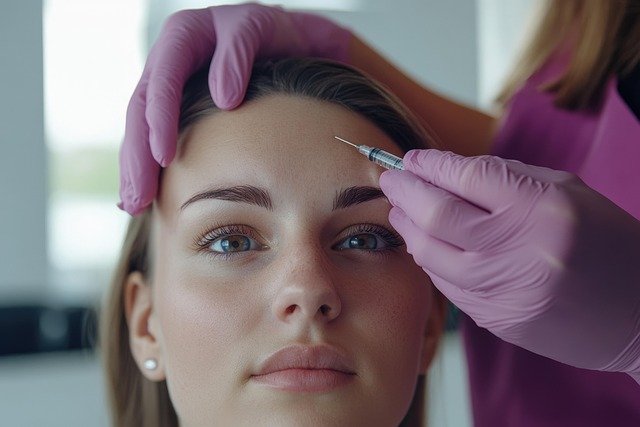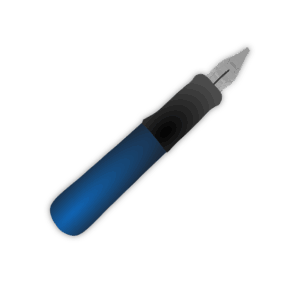Botox and dermal fillers are popular anti-aging treatments that differ in their mechanisms and target areas. Botox relaxes facial muscles to prevent dynamic wrinkles, while dermal fillers add volume using hyaluronic acid or collagen. Botox is ideal for reducing lines around the eyes and mouth caused by muscle contraction, while dermal fillers enhance facial contours in areas like cheeks and jawline. Both treatments have safety considerations, with potential risks including bruising and headaches/stiffness from Botox. Maintenance differs, with Botox requiring regular injections every 3-6 months, versus longer-lasting results from dermal fillers lasting 6 months to years. Consulting a dermatologist is crucial for determining the best option based on individual needs and understanding the pros and cons of each treatment.
“Uncover the secrets to achieving a youthful glow with our comprehensive guide on Botox and dermal fillers. In the quest for younger-looking skin, these treatments have taken the beauty world by storm. This article explores the science behind Botox and its potent anti-aging properties, while also delving into the role of dermal fillers in skin rejuvenation. We’ll highlight key differences between these popular choices, discuss safety concerns, and provide expert advice on choosing the right treatment for your needs. Get ready to navigate the world of Botox vs. dermal fillers with confidence.”
Understanding Botox and Its Anti-Aging Properties

Botox has emerged as a popular and effective solution for achieving younger-looking skin, offering a unique approach to anti-aging compared to other cosmetic treatments. It’s a protein that blocks nerve signals to specific muscles, preventing them from contracting and causing wrinkles to form. This non-invasive procedure is often sought by individuals aiming to reduce the appearance of fine lines and crow’s feet around the eyes and mouth.
Unlike dermal fillers, which add volume and plumpness to the skin, Botox works by relaxing muscles, resulting in a smoother, more youthful complexion. While both treatments are popular in the cosmetic world, they cater to slightly different needs. Dermal fillers are ideal for patients looking to enhance specific areas of their face that have lost volume over time, whereas Botox is particularly effective in preventing and reducing existing lines and wrinkles caused by muscle contraction.
The Role of Dermal Fillers in Skin Rejuvenation

In the quest for youthful skin, both Botox and dermal fillers have emerged as popular treatments, each offering unique benefits. While Botox is renowned for its ability to smooth fine lines and wrinkles by temporarily paralysing muscles, dermal fillers play a complementary role in skin rejuvenation. These injectable substances work by adding volume and plumping up depressed areas, enhancing facial contours and improving the overall texture of the skin.
When considering Botox vs dermal fillers, it’s essential to understand their distinct functions. Dermal fillers can instantly fill in deep wrinkles, hollows, or loss of volume in the cheeks, jawline, or brows—areas where bones provide less protection. This makes them ideal for restoring a more youthful appearance, especially in patients who have reached the end stages of natural skin ageing. In contrast, Botox is better suited for preventing dynamic wrinkle formation by reducing muscle activity, making it particularly effective around the eyes and forehead.
Key Differences Between Botox and Dermal Fillers

When considering cosmetic procedures for achieving a younger look, understanding the differences between Botox and dermal fillers is essential. Both are popular treatments aimed at reducing the signs of aging, but they work in distinct ways.
Botox is a neurotoxin that relaxes specific muscles, smoothing out fine lines and wrinkles by preventing their contraction. It’s particularly effective for dynamic wrinkles caused by facial expressions, such as frown lines, crow’s feet, and forehead wrinkles. Dermal fillers, on the other hand, are injectable gels that add volume to the skin, plumping up deep wrinkles and enhancing facial contours. They’re ideal for static wrinkles and can also improve the appearance of hollows or dips in the face, providing a more youthful, full look.
Safety and Effectiveness Considerations for Both Treatments

When considering Botox or dermal fillers for achieving a younger-looking skin, it’s crucial to balance safety and effectiveness. Both treatments have their own unique advantages and potential risks. Botox, a neurotoxin that temporarily paralyzes muscle activity, is particularly effective in reducing dynamic wrinkles caused by facial expressions. It’s generally considered safe when administered by a qualified professional, with temporary side effects such as bruising or swelling being the most common. However, it may not be suitable for everyone, especially those with certain medical conditions or allergies.
On the other hand, dermal fillers offer immediate results by adding volume and plumping to the skin. They are made from hyaluronic acid, a substance naturally present in our bodies. While generally safe, complications can include temporary redness, swelling, or discomfort at the injection site. More severe side effects, though rare, may include infection or an adverse reaction to the filler. When choosing between Botox and dermal fillers, it’s essential to consult with a dermatologist who can evaluate your specific needs and help determine which treatment is best for you, keeping in mind the pros and cons of each: Botox vs dermal fillers.
Choosing the Right Treatment: Factors to Consider

When considering botox or dermal fillers for a younger-looking skin, it’s crucial to understand the differences and choose the treatment that aligns best with your goals. Both Botox and dermal fillers have their unique applications and effects on the skin. Botox is primarily known for temporarily paralyzing muscles, reducing dynamic wrinkles caused by facial expressions, like frown lines or crow’s feet. It’s ideal for those seeking a more relaxed, youthful appearance without changing the overall structure of their face.
On the other hand, dermal fillers are designed to add volume and smooth out static wrinkles by plumping the skin with hyaluronic acid or collagen. They provide immediate results and can enhance specific areas such as cheekbones, jawline, or lips. Comparing Botox vs dermal fillers, the choice depends on whether you want a non-surgical approach to relax muscles and reduce dynamic wrinkles or augment certain features with immediate volume. Consulting with a dermatologist helps in making an informed decision based on your skin type, desired outcomes, and personal preferences.
Potential Side Effects and Management Strategies

While Botox is a popular choice for achieving a youthful complexion, it’s important to be aware of its potential side effects. Unlike dermal fillers, which can cause issues like lump formation and uneven skin texture, Botox primarily results in temporary muscle weakness at the injection site. This may lead to mild headaches, muscle stiffness, or discomfort around the treated area. However, these symptoms are usually fleeting and manageable.
To mitigate any negative effects, patients should follow their dermatologist’s aftercare instructions precisely. This often includes avoiding strenuous activities, certain medications, and direct sun exposure for a short period post-treatment. Regular check-ins with your healthcare provider can also help in addressing any concerns promptly, ensuring an optimal outcome compared to Botox vs. dermal fillers.
Maintenance and Follow-up Care for Lasting Results

Botox and dermal fillers are popular cosmetic treatments, but their maintenance and follow-up care differ significantly. To achieve lasting results with Botox, regular injections every 3-6 months are typically required, depending on the area treated and individual metabolism. This maintenance regimen helps to maintain the desired effects, as Botox’s impact is temporary. On the other hand, dermal fillers offer a longer-lasting solution, with results varying from 6 months to several years, depending on the type of filler used.
For optimal outcomes, it’s crucial to adhere to post-treatment instructions. This includes avoiding strenuous activities, certain medications, and specific skincare routines for a period after the procedure. Both Botox and dermal fillers patients should be mindful of their lifestyle choices as these can influence healing and the longevity of results. Regular follow-up appointments with a qualified practitioner are essential to assess treatment progress and address any concerns promptly, ensuring continued satisfaction with the aesthetic enhancements.
